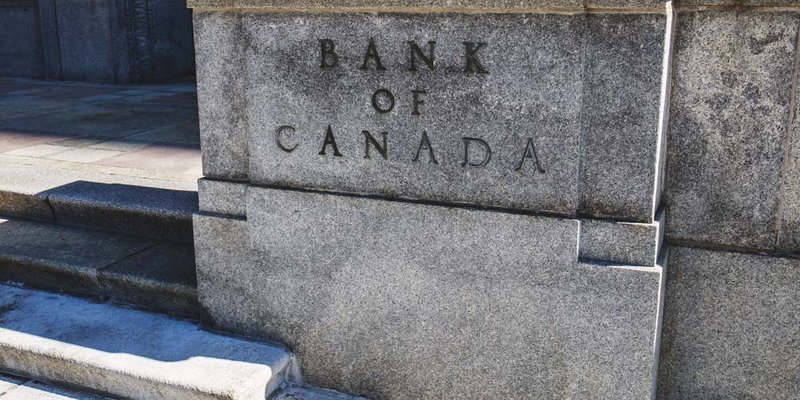
If you are not redirected within 30 seconds, please click here to continue.
Samedi: 10h – 16h HAE

If you are not redirected within 30 seconds, please click here to continue.
If you are not redirected within 30 seconds, please click here to continue.
Bank of Canada leaves July Rate Unchanged

With the Canadian economy seeing less growth than anticipated, the Bank of Canada is not budging on its trend-setting overnight lending rate. The central Bank is leaving the rate at 0.5% – where it has been for the past 12 months. The Bank Rate remains at ¾ percent, and the deposit rate at ¼ percent.
Some of the factors behind the decision to hold the overnight rate include the Brexit fallout, disappointing figures for Canadian exports and weaker investment in North American business as a whole.
Uneven growth in Canada, but there are some good signs
In its statement released today, the Bank of Canada points to GDP growth of 2.4% in the first quarter followed by a 1% contraction in the second quarter. The central bank attributes this to volatile trade flows, uneven consumer spending and the Alberta wildfires – the main factors affecting the April to June period.
As a result, the Bank’s economic forecast has been revised slightly lower. Real GDP is anticipated to grow by 1.3% in 2016, with the Bank citing above-potential growth due to rising U.S. demand as well as stimulus measures announced in March by our federal government in its 2016 budget. The Bank also says oil prices are starting to climb higher and stabilize the Canadian energy sector, while household spending is expected to increase. Looking further onto the horizon, the Bank predicts GDP growth of 2.2% in 2017 and 2.1% in 2018.
When it comes to inflation, the Bank says the figure has been slightly higher than anticipated – mostly due to higher consumer energy prices. However, it’s still in the lower half of the Bank’s inflation control range. The Bank projects that inflation will remain close to 2% throughout the next year.
The Brexit factor
Stock markets all around the world felt the effects of the June 23rd referendum that saw a small majority of U.K. voters side with leaving the EU. Economists say that Brexit could lead to slower growth all around the world including in the U.S. This, in turn, could have a negative impact on Canada’s exports – something that the Bank of Canada sees as imperative to the growth of our economy.
Bank of Canada governor Stephen Poloz has been hoping for economic recovery led by exports, as a result of stronger demand from the U.S. as our dollar remains low. But Brexit could dampen this by delaying another hike in the U.S., despite decent economic performance there.
Hottest housing markets show no signs of abating
The red-hot real estate markets in Toronto and Vancouver are both a blessing and a curse, and it’s one of the only signs that justifies an eventual increase in rates. Of course, it’s terrific for sellers who plan to downsize but can prove to be a challenge for those entering the market for the first time.
Following this latest announcement, homebuyers and sellers can expect much of the same going forward. Mortgage rates will continue to remain at historic lows.
What this means for YOUR mortgage
As our expert Mortgage Rate Outlook Panel forecasted at the beginning of this month, prices for both fixed and variable rate mortgages will stay about the same for at least the next few months. Fixed will likely hold underneath the 3.0% benchmark and variable rates will hover around 2.7%. However, some providers are offering much lower rates.
This means that Canadians can expect the current real estate trend to continue. With mortgage rates staying so low, they’re still cheap to maintain and are in record demand, fueling an overall increase in home prices. Only an overnight rate hike will lead to more expensive mortgages, and that may produce a cooling effect in the Toronto and Vancouver markets.
For soon-to-be homebuyers currently searching for a mortgage, both fixed and variable rate mortgages are currently offered at low rates. It’s always a good idea to check what options are available on the market and compare them to see what’s best for the buyer.
As for the future …
Recent data from CME Group finds there’s a one-in-five chance of the U.S. Federal Reserve raising rates once again between now and June of 2017. Should the U.S raise their rates when they meet at the end of July or when they meet in September, the Bank of Canada is likely to follow suit. But according to our mortgage rate panellists, a change on this side of the border isn’t likely to happen in time for the next Bank of Canada meeting in two months’ time. Uncertainty around how and when Brexit will take place has lenders remaining on the cautious side and waiting for some clarity before making any large moves.
The next Bank of Canada interest rate announcement is scheduled for September 7, 2016. The next full economic and inflation outlook will be published on October 19, 2016.
Get money-saving tips in your inbox.
Stay on top of personal finance tips from our money experts!








